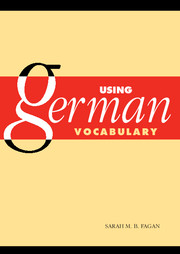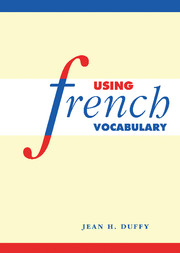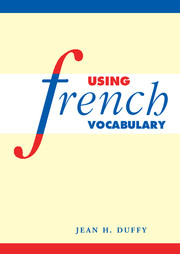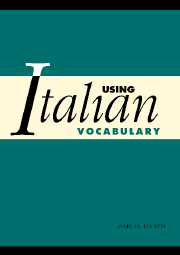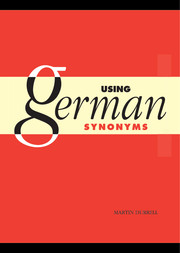Using German Vocabulary
This textbook provides a comprehensive and thematically structured vocabulary for students of German. Designed for all but the very beginning levels of undergraduate study, it offers a broad range of vocabulary, and is divided into 20 manageable units dealing with the physical, social, cultural, economic, and political world. The word lists are graded into three levels that reflect difficulty and likely usefulness, and are accompanied by extensive exercises and activities, designed to reinforce work done with the lists, and to increase students' competence in using the vocabulary. Suitable for both classroom teaching and private study, the exercises also make use of authentic German texts, enabling students to work with the vocabulary in context. Clearly organized and accessible, Using German Vocabulary is designed to meet the needs of a variety of courses at multiple stages of any undergraduate programme.
- Divided into twenty thematic units, each graded into three levels
- Includes over 600 exercises - some with solutions - suitable for both private study and classroom use
- Includes a special additional chapter on 'Words and word formation', which discusses the structure of German words, and encourages students to use dictionaries effectively
Product details
May 2004Paperback
9780521797009
596 pages
240 × 170 × 32 mm
0.995kg
45 b/w illus. 646 exercises
Available
Table of Contents
- 1. Towns and buildings, household, gardens
- 2. The physical world, the animal world, weather
- 3. The human body and health, the health service and medicine
- 4. Physical appearance, gesture and movement
- 5. Personality and human behavior
- 6. Clothes, accessories and grooming, food and drink
- 7. Perception, color and light, materials and textures
- 8. Shapes and patterns, size and quantity, containers, time
- 9. Visual and performing arts, media and popular culture
- 10. Literature and literary criticism, speaking, reading and writing
- 11. Leisure, sport
- 12. Tourism, travel and transport
- 13. Family, birth, death, and marriage, religion
- 14. Education, science
- 15. Agriculture, industry
- 16. Business and commerce, employment
- 17. The office and computing, post and telecommunications
- 18. Law, finance
- 19. Geography, history, war, and peace
- 20. Politics and international relations, public services, social and environmental issues
- Answers to the exercises.

